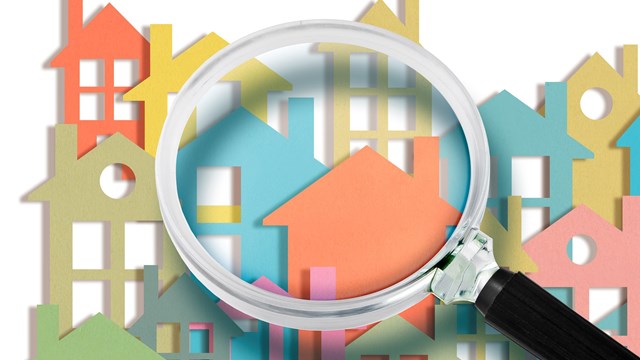All it takes is a single spark. Fires can destroy property and destroy lives in a matter of minutes. In 2003, the New York City Fire Department (FDNY) fought more than 27,000 structural fires and the New York City Red Cross responded to an average of eight fires a day, providing care and shelter to victims. Fires can happen anywhere and to anyone. Often, though, these tragedies can be prevented with proper planning, knowledge and a bit of common sense.
Vigilance is key. "Think fire safety at all times," says Robert Bittar, owner of Complete Fire Safety - a fire prevention consultation firm in Brooklyn - and former deputy chief inspector for the FDNY. A little prevention can go a long way.
All building managers want to keep their residents safe. The best way to do that? Preventative maintenance and solid communication.
Priority number one should be ensuring that the building is up to code and that all fire detection and suppression equipment is functional. If the building has not been inspected for some time, it may be wise to hire a fire prevention professional to check it out. "We'll look at the fire suppression systems," Bittar says. "We'll make sure no exits are blocked, ensure there's no rubbish blocking the halls, that the exit lights and emergency lights are functioning. If you're missing something, we'll be able to tell you what it is."
The inspection team then will provide a detailed assessment, including suggestions on what information needs to be shared with residents. Professional fire safety inspectors will also inspect sprinkler systems and water flow, both inside and outside the building. Ensuring that these safety measures function properly is the responsibility of the building managers.
Beyond the initial inspection, it's up to the board and management to make sure key operating systems continue to function smoothly and safely. Building staff should inspect the boilers and heating system on a regular basis. The electrical system should be checked to ensure it is not being overloaded.
Pursuant to the adoption of Local Law 7 earlier this year, which requires all housing units to now contain CO detectors, batteries in all smoke and carbon monoxide detectors in public and common areas should be checked every six months. Local Law 7 follows the example of Local Law 10, enacted in 1999 and requiring that all newly-constructed multifamily buildings be fully protected by sprinklers. In addition to that, local law also requires fire safety notices and evacuation plans be posted conspicuously or distributed among residents.
Of course, all that is of little use if hallways and escape routes are obstructed by debris or rubbish. Any materials that could block exits should be removed - something as seemingly innocuous as a few sheets of drywall left in the wrong place could cause significant problems in the event of an evacuation.
FDNY Chief of Fire Prevention Patrick McNally also recommends that the building's board create a fire prevention maintenance committee, placing resident volunteers in charge of routine building walkthroughs. "Residents can keep an eye on things in the building," McNally says. "If they notice there's always garbage near the exits, they can request that it be taken care of." The committee can also be charged with ensuring that larger issues are monitored, says McNally, like "Are the sprinklers always kept in operation? Are the elevators in proper condition?"
By engaging owners and shareholders in fire safety, McNally says, details will be less likely to fall by the wayside. "The committee should take a walk through the building on a regular basis; they should look for the really basic stuff that you would look for in your own home. It's not brain surgery. If it looks bad to you, it probably is bad and it should be fixed."
Beyond the committee, it's important to keep all residents informed. Building newsletters and websites should be used to remind shareholders and unit owners to check the batteries on their own smoke and carbon monoxide detectors. It should remind them to create evacuation plans and to be careful when smoking or using candles. In short, any medium regularly used to communicate with residents should include fire prevention information, too.
Training courses also can help residents better understand fire safety measures. The fire prevention committee can invite firefighters from the local firehouse to come to the apartment building and hold a fire drill. "It helps residents and it helps firefighters by giving them a new and different place to train," McNally says.
Organizations such as the Red Cross also offer emergency training programs and tailor them specifically to fire prevention, if requested. "We'll teach people specific steps - show them how to test their doors before leaving their apartments, how to count doors to find exits, how to drop low to avoid smoke, how to "˜stop, drop and roll,'" says Margaret Kelley, director of preparedness and community outreach for the New York Red Cross. Every piece of information, no matter how large or small, may save a life.
In 2003, smoking was the number-one cause of fire related deaths in New York, followed by extension/appliance cord malfunctions, arson, cooking accidents and candles. Carelessness is often the silent catalyst for these accidents. When common sense is ignored, problems arise.
McNally has a backlog of fire stories that begin with people leaving candles unattended near bedclothes or other flammable materials. "There are really basic things that can be done to prevent fires," McNally says. "Don't plug six air conditioners into one outlet. Don't leave your candles burning when you go outside. Don't run your extension cords under rugs where they can fray and catch fire. Don't be careless while cooking."
Bittar adds that "smoking in bed is never a good idea," and advises both residents and building staff to keep newspapers and other rubbish away from heat sources. The slow decomposition of newspapers stored in a damp, warm place can actually cause the paper to spontaneously combust.
During the holidays, additional fire hazards arise. More candles are used in homes, cooking goes into overdrive, and trees can pose problems if they aren't kept moist. "Never put your tree near an exit," McNally says. Even unwrapping those holiday gifts can cause problems if garbage chutes become clogged with wrapping paper and festive debris. One spark could ignite the chute and everything in it.
In the kitchen area, the FDNY suggests keeping all materials such as paper, dishcloths and flammable liquids away from the stove - even a pilot light can set vapors on fire. Keep a box of baking soda and a large pot lid nearby as well for smothering cooking fires - never throw water on a grease or electric fire. And have a kitchen fire extinguisher on hand. The old adage of better safe than sorry always applies.
People always must keep their smoke and carbon monoxide detectors functional. Check the batteries each time daylight savings time changes - it's an easy reminder. "Smoke and carbon monoxide detectors go a long way to helping us out," McNally says.
Asking people to be responsible for their own fire safety is the best way to keep entire buildings safe. In terms of law enforcement, there's not much the fire department can do when it comes to individual apartments. They only way they can comment on a problem is if they respond to a call and notice problems while inside the dwelling. "It's encumbent upon the occupant to keep their unit up to code," McNally says. Having fire safety expectations written into bylaws and house rules will help remind residents of their responsibilities, however, and will help homeowners understand what they need to do to keep themselves and others safe.
In the event a fire does arise, preparedness will pay off. Taking an hour or so every now and then to come up with an evacuation plan could save substantial grief later. "Our goal is to train every resident of New York City to be prepared for any emergency," says Kelley. Being well prepared helps people react more appropriately during emergencies such as fires, and as Kelly points out, "Preparedness is the antidote to fear."
Having a well thought-out evacuation plan can be key. "Every six months or so is the perfect time for families to have evacuation drills," McNally says. When drawing up the plans, be sure to keep them simple. Know where the nearest stairwell is. Never head for the roof and don't use the elevator. Once you've devised an escape route, practice it with the whole family. "You need to actually practice the plan - not just talk about it," Kelley says.
Residents inside their apartments should "take 10 or 15 minutes to check windows and doors and make sure they can open them," McNally says. "It's unfortunate that a lot of people are more security-conscious than fire-conscious. If you make it harder for burglars to get in, you're also making it harder for firefighters to get in." If a fire breaks out in your unit, make sure you close the door behind you on the way out. Containing the fire will reduce the spread of smoke and make things easier on the firefighters.
"People get in trouble when they never think about evacuation plans," McNally says. "You need to think about if you've been in each stairway. Do you know where each stairway leads? You want to make sure you know what everything looks like in case of panic."
It's important, too for residents to have a rally point for their families once outside the building. Kelley suggests having two meeting points: one nearby and one further away on the off chance that the fire becomes so large it renders the entire block unsafe. Rally points are imperative in a good evacuation plan. They ensure that all family members will be accounted for at a time when individuals may not be thinking clearly. Too many people, Bittar says, are killed going back into a building in search of a family member who already may have escaped. And once you and your family are accounted for and out of harm's way, stay put. "As hard as it is," McNally says, "don't go back for the dog or your wallet."
The Red Cross recommends, too, that every household have an emergency go-bag ready and waiting by the front door. Use a backpack so you'll be able to keep your hands free. In the bag, keep copies of your credit cards and insurance policy and some cash in the event you can't get back in the building. Also, keep a flashlight in case emergency lighting fails.
If a fire alarm goes off, always heed it. "In a high rise, the alarm could go off and you might not see any problems in the immediate area," Kelley says. "You should still evacuate."
McNally also encourages elderly residents or those with disabilities to establish a buddy system with neighbors who can help them get out of the building. Individuals with mobility issues also can call their local firehouse and register with the Critical Information Dispatch System, which provides firefighters with addresses and apartment numbers of disabled individuals so they can reach them more quickly. McNally says that information should be kept up to date at all times to ensure the safety of resopnse teams. "We don't want to risk guys if there's no need," he says.
Thanks to the hard work of fire fighting professionals, the city's fire prevention record is getting better and better. "There's more stringent code enforcement," Bittar says. "And more qualified inspectors out there, too." With the proper precautions and a little common sense, people can stay safe. And that's always priority number one.







Leave a Comment